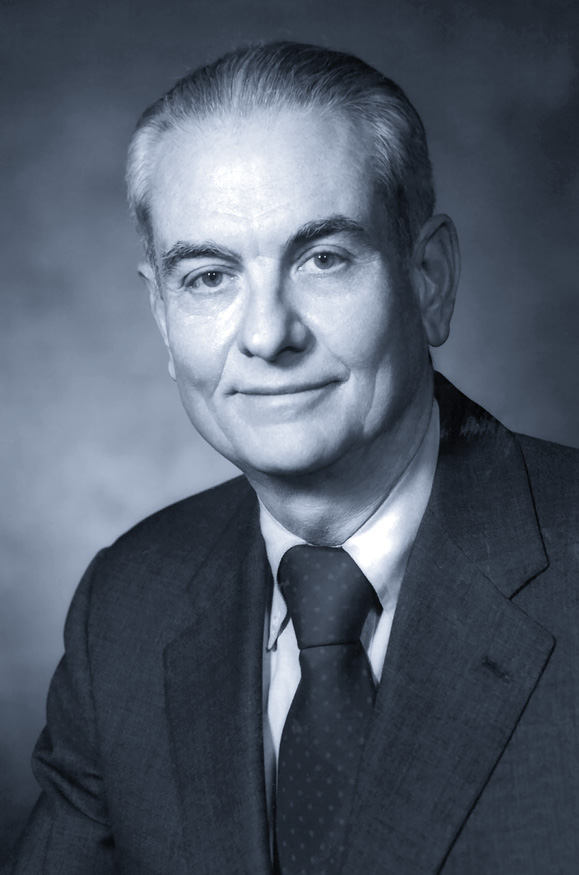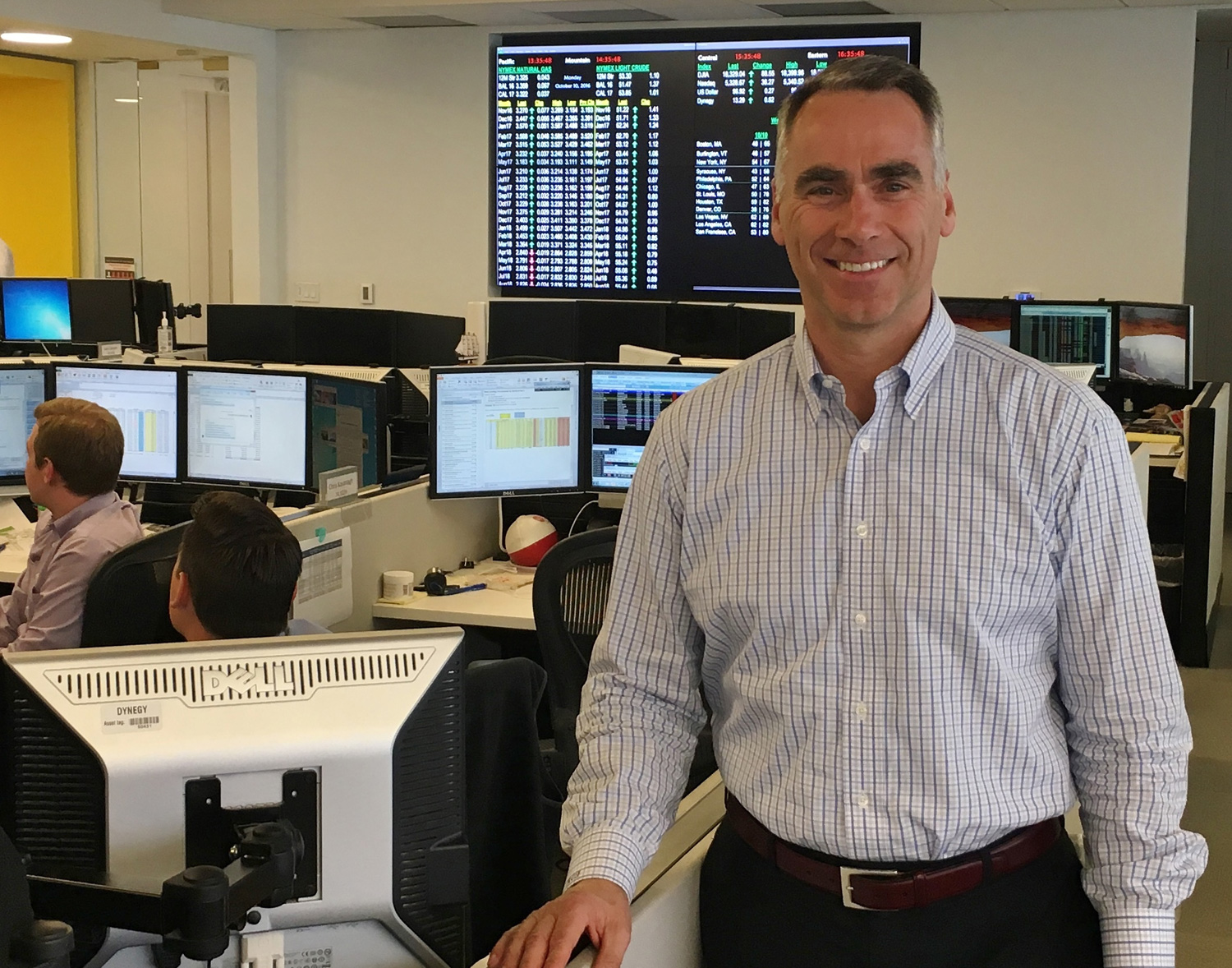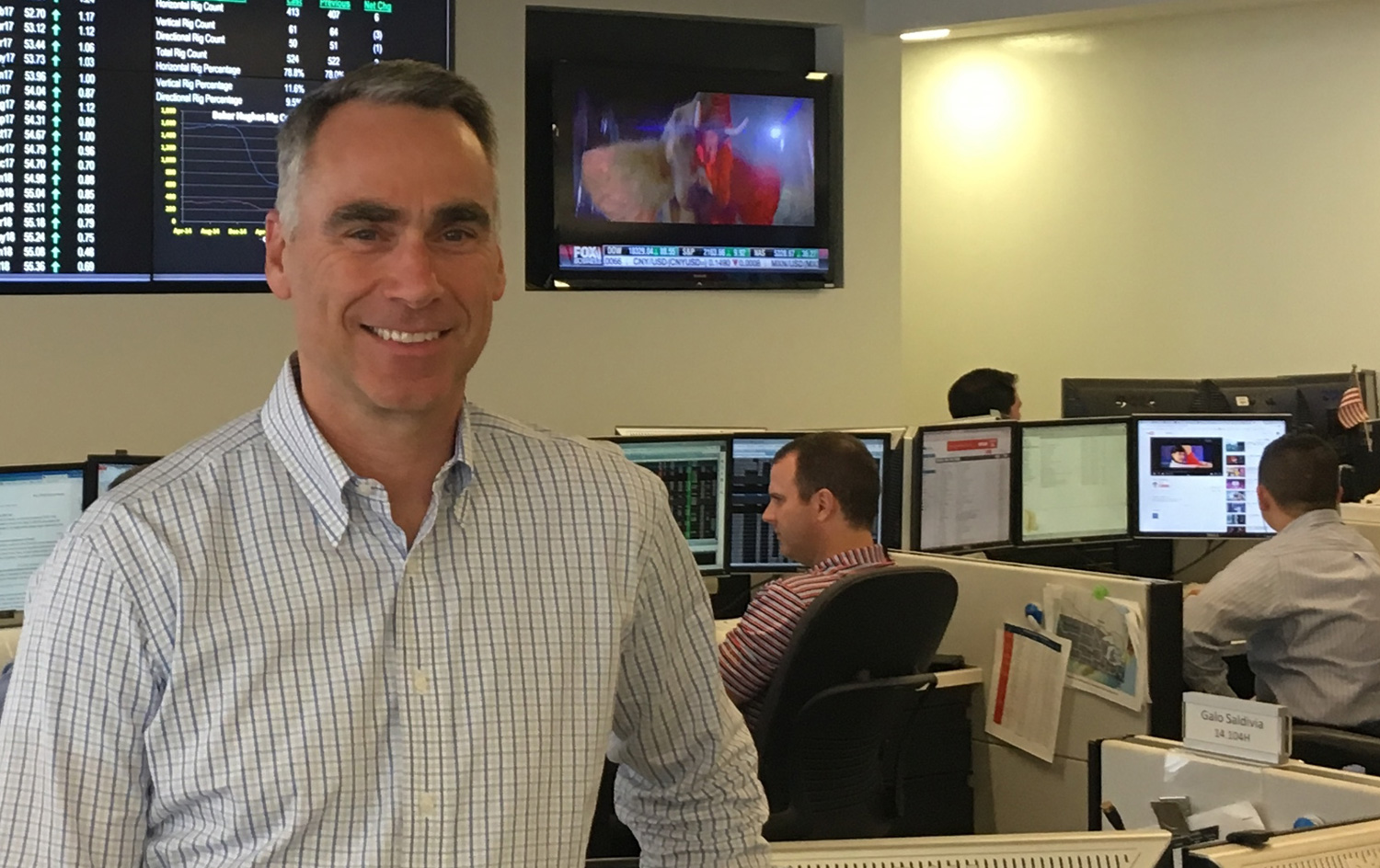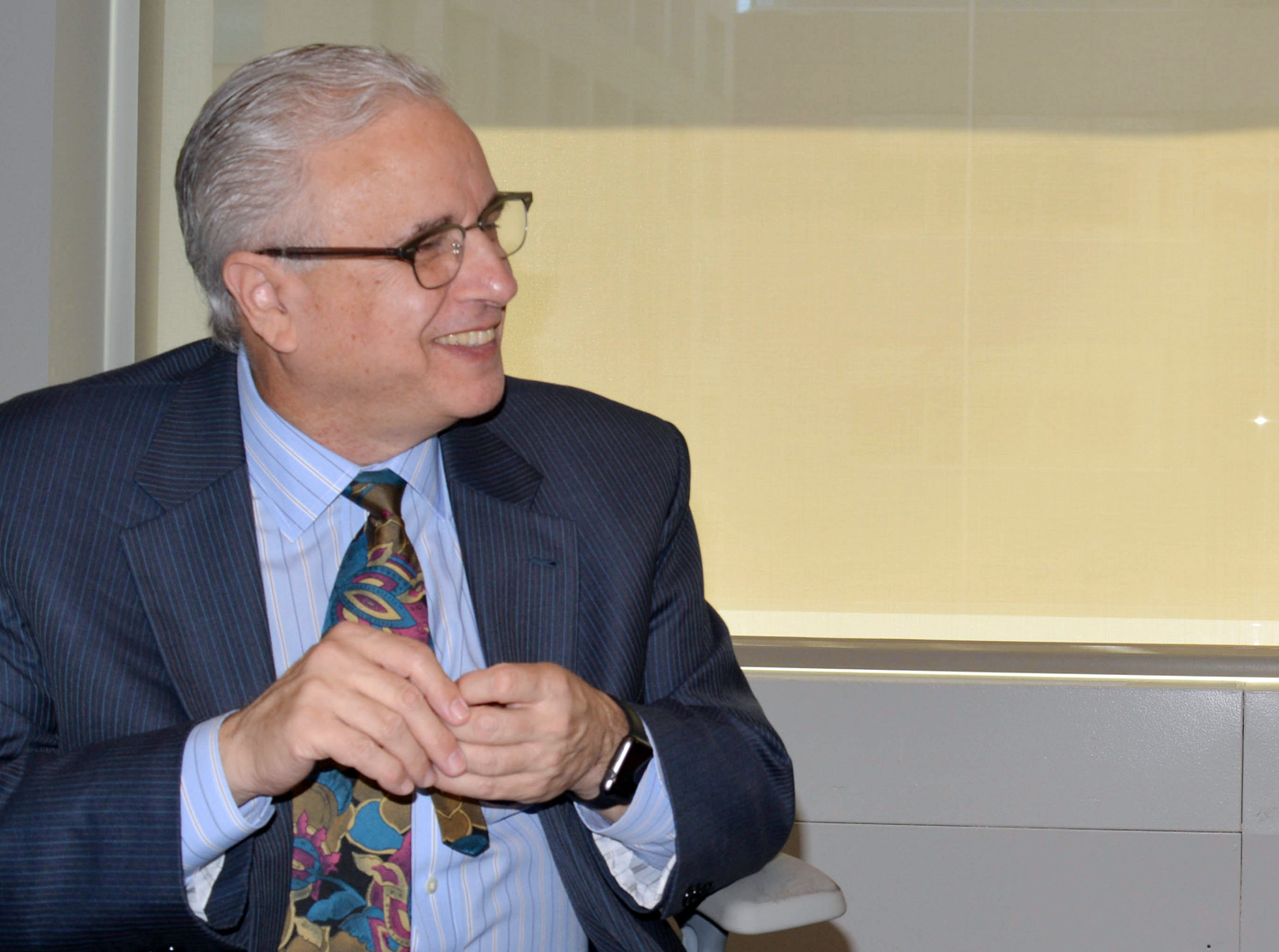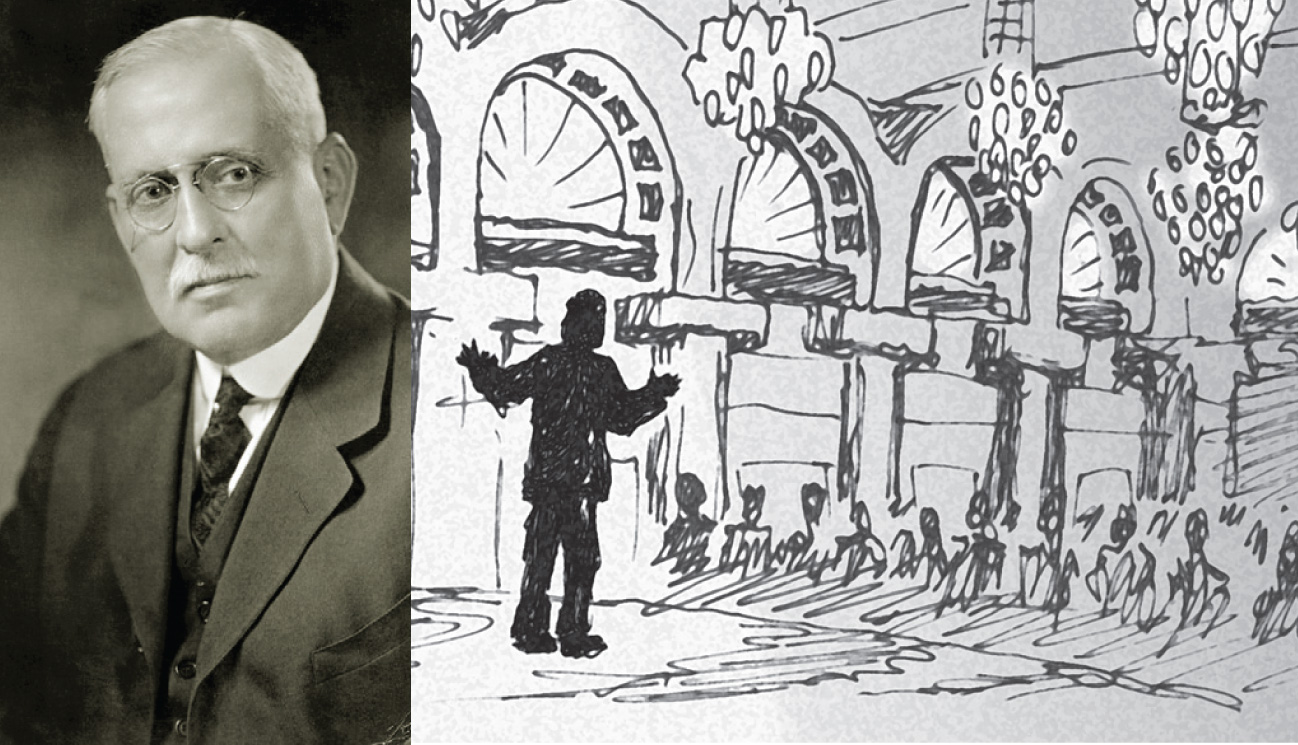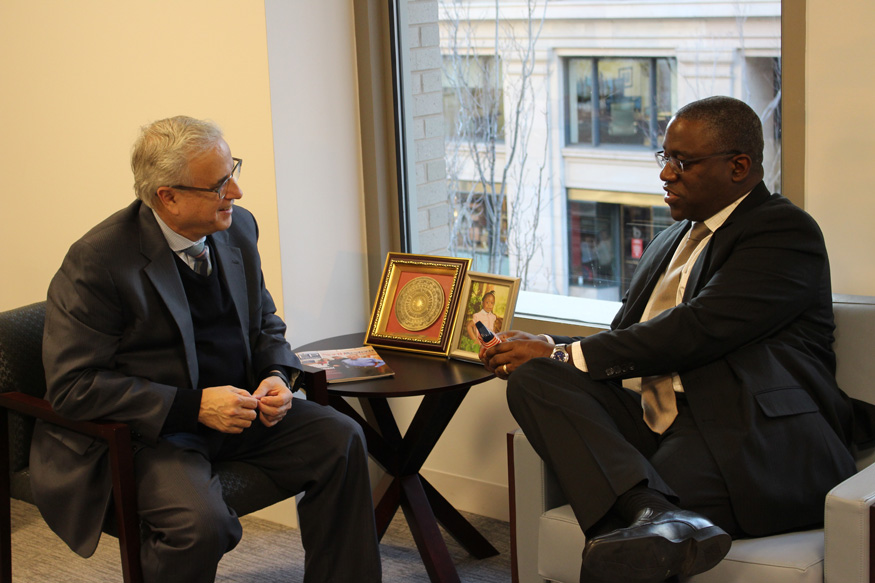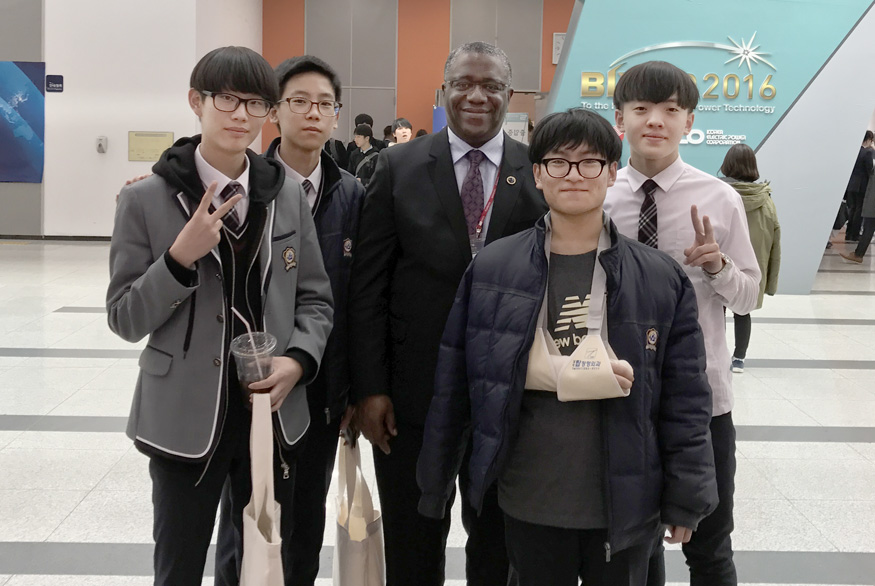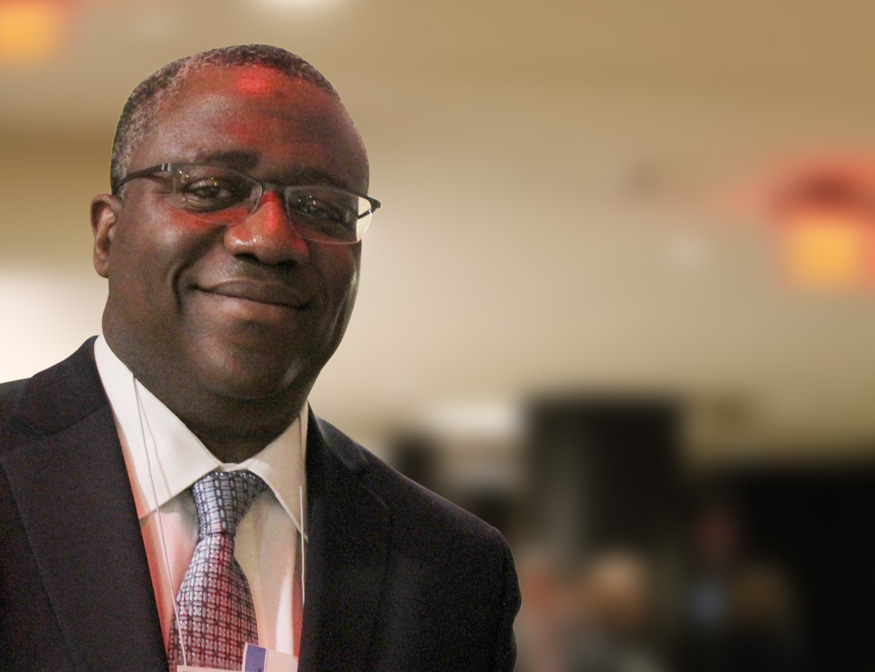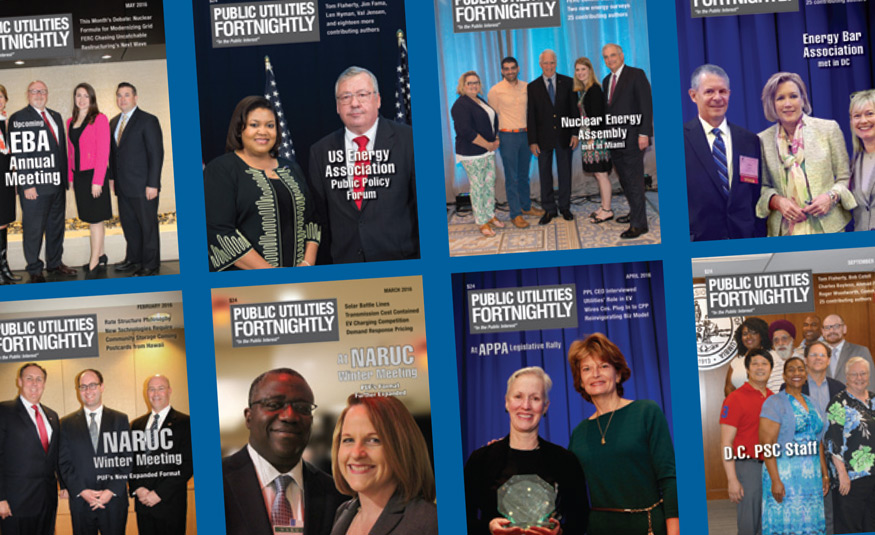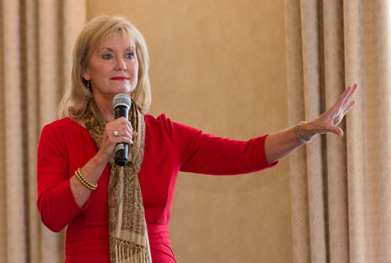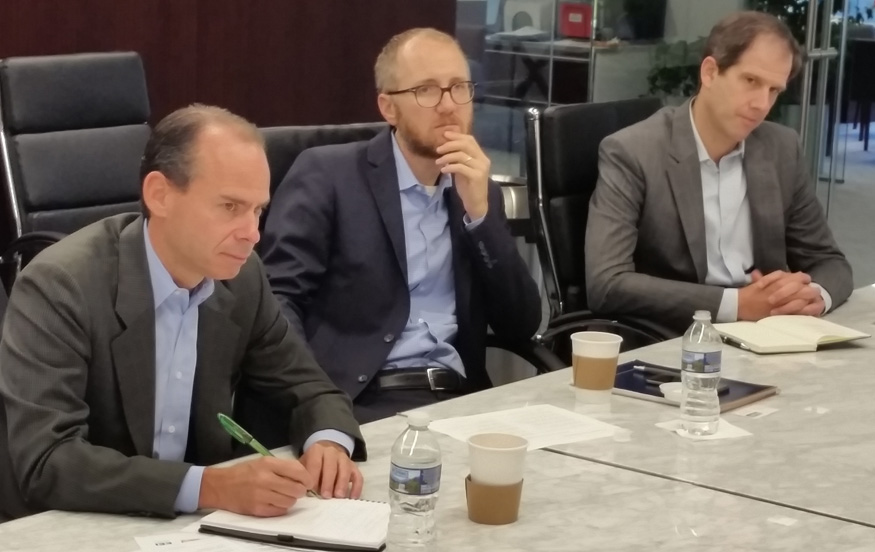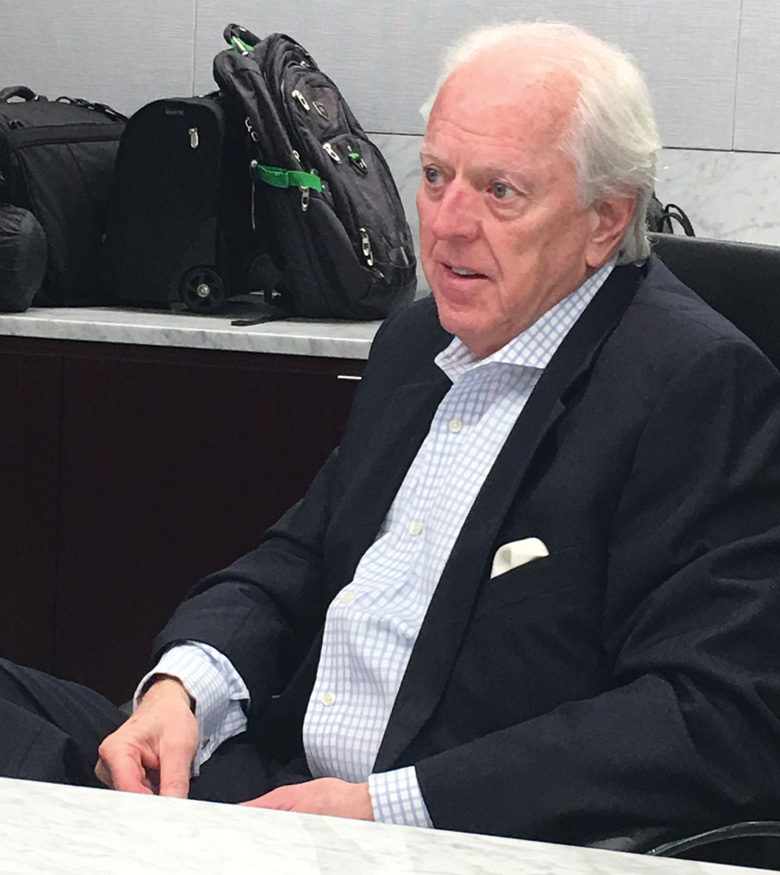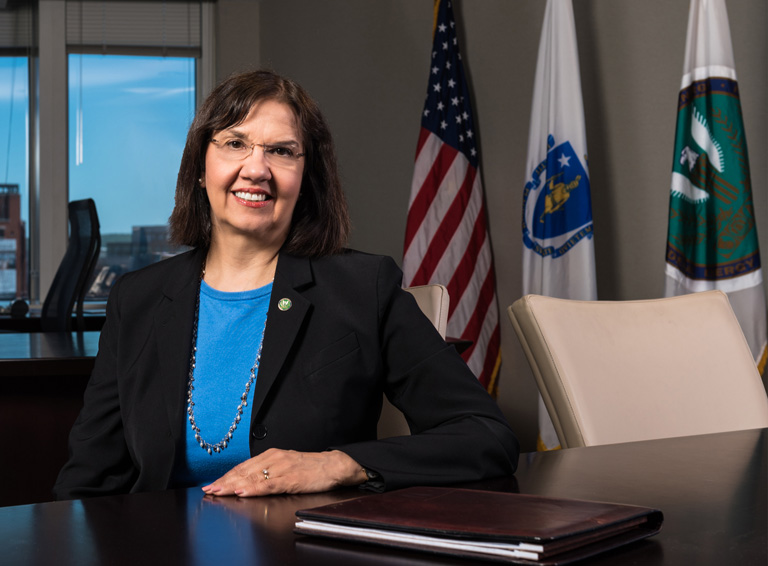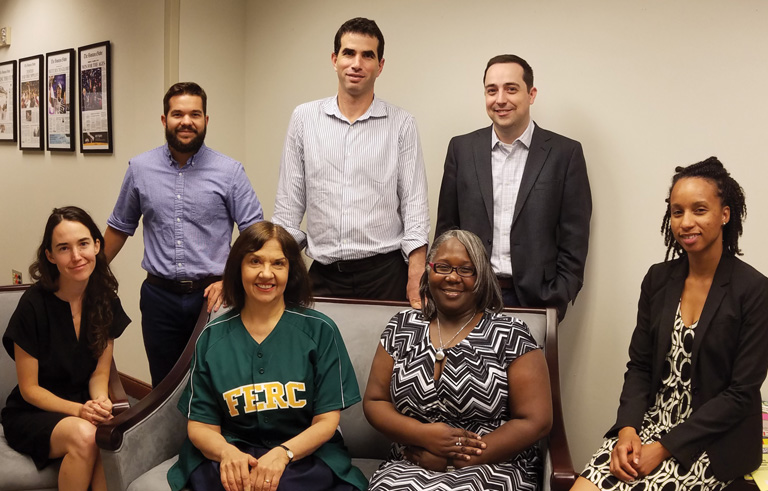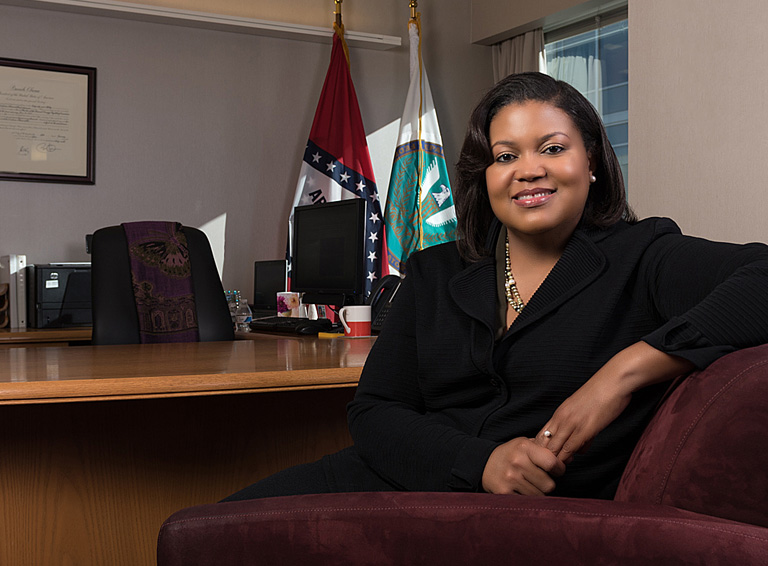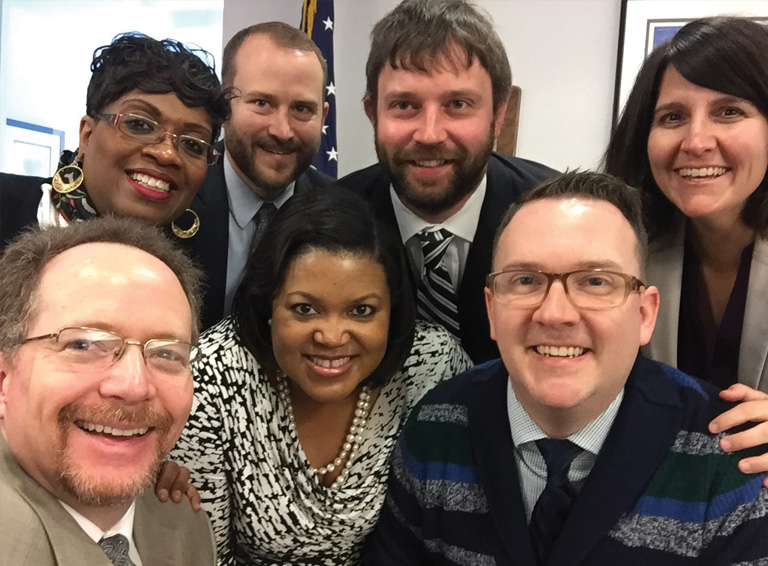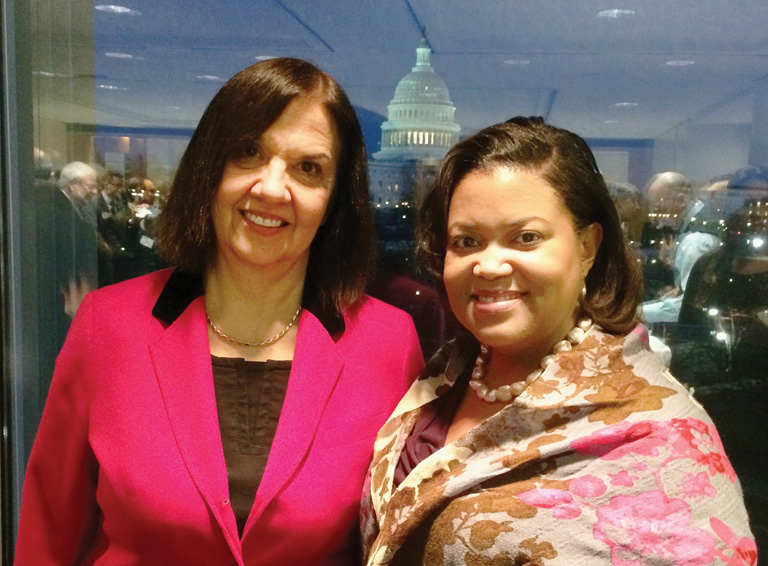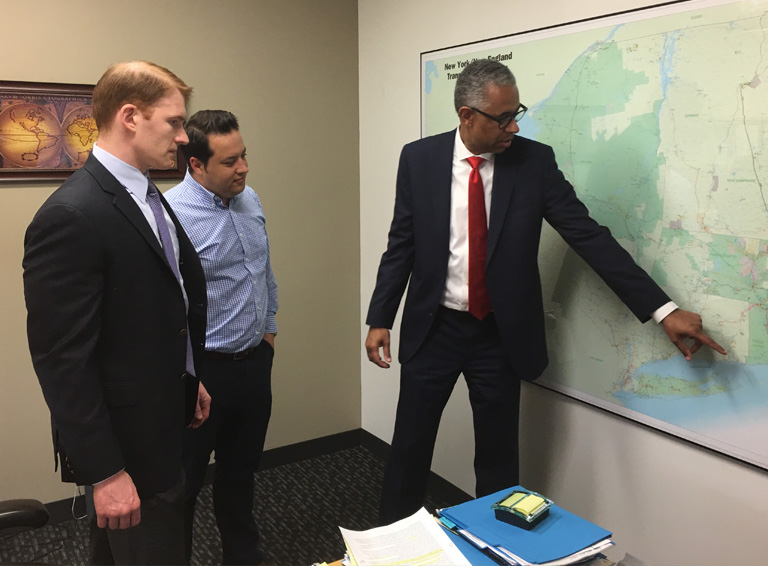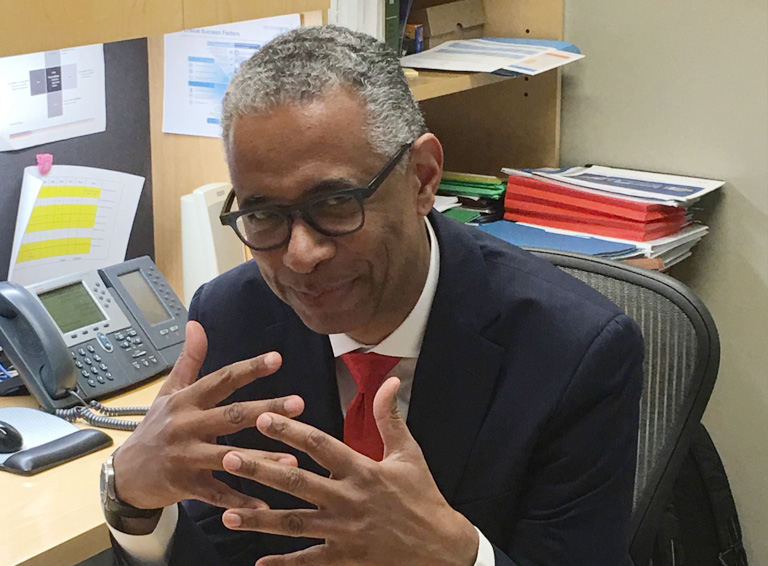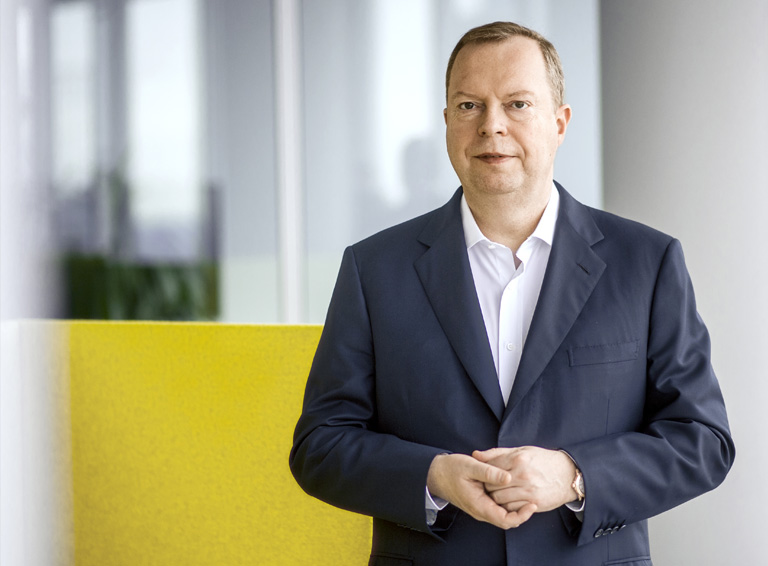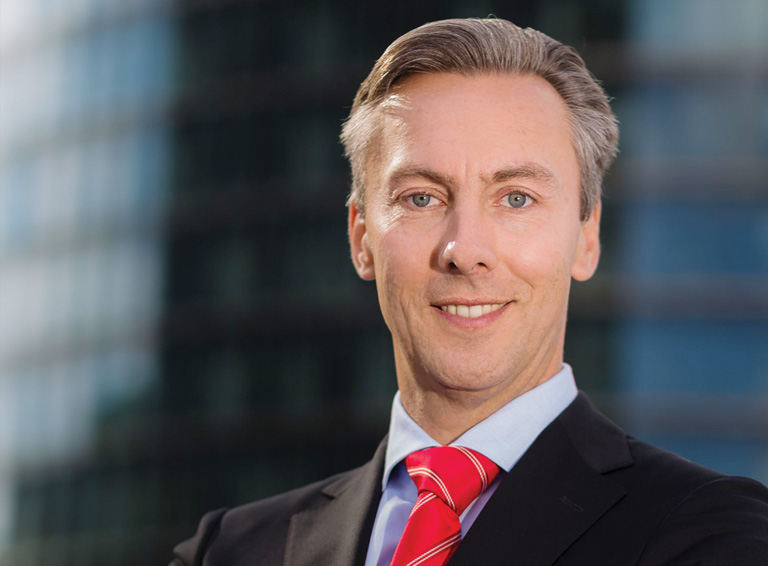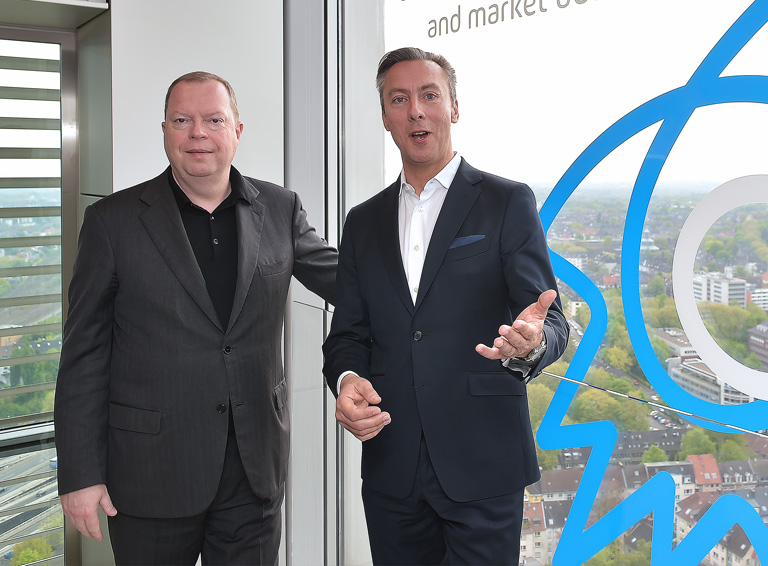The January 2017 Innovation Roundtable collaboration between Strategy& and Public Utilities Fortnightly focused on how executives at five leading companies began the stand-up and execution of their innovation programs.
High expectations for innovation exist across all the companies, even though the path to ultimate program success is still to be fully designed. In only a short time, what originally defined success is continually evolving to match the requirements for market positioning.
The executives now recognize that several challenges to innovation success exist related to the role played by the utility and the time-to-market. Also important is the relationship companies want to have with risk. And, these leaders know they have to drive innovation beyond being just a concept to becoming part of their companies' DNA. And developing new business models that they have never considered.
Industrial companies focus on getting to market fast and think in one- or two- year windows. But the utilities industry never had to think about time-to-market and currently tends to consider a three-year plus window comfortable.
Markets move at speeds very different than companies, particularly regulated utilities. If pent-up demand is not met by utilities, someone else will step in to do exactly that. If future customer needs are not defined to enable fulfilling those needs, it will be too late to address the market at a future time.
The key is to connect ideation directly to commercialization. It is far more valuable to turn good ideas into value than to generate a multitude of ideas that do not hold commercial promise or cannot be successfully executed.
These utilities have pursued partnering in many forms: for investment; for expertise; for collaboration, and for big ideas. Partnering has not historically been a characteristic of the utilities industry. Too often partnerships have failed to benefit either party or create any market distinction due to misconstrued purpose and inconsistent motivations.
Successful partnering depends on enterprise and individual chemistry, as well as a shared commitment to what really matters: making customers better off. It is hard for partnerships to stand the test of time. It's still harder for these relationships to weather market adversity or unrealized expectations.
This is particularly true with respect to de-risking utilities' market bets through relationships with savvy financial investors such as venture capitalists. Through those relationships, these utilities are leveraging broad market awareness, risk syndication and capital sourcing strategies that increase the likelihood of successfully taking a new technology into the market.
Even as companies are only beginning to progress through their innovation life cycle, they are already looking ahead. They want to embed a culture of innovation, where the DNA of the business reflects the challenge of advancing the business.
The executives fully expect that pursuing a market future built on a foundation of innovation and a focus on commercialization will have wide-ranging impacts. Conventional wisdom suggests that the business model will fundamentally change, and it will. But that is not the end of the story. Some elements will stay the same, some components will change and some new dimensions will be added.
Migrating from a model that emphasized investment to generate earnings to a model that focuses on product and service volume to produce margins is a fundamental shift. But the challenge these executives acknowledge is learning how to blend several unique business models as the scope of their business expands.
These executives paint an optimistic picture of how the future may unfold, though it is not without its challenges and risks. Moreover, they understand that the competencies their companies will need have yet to be fully developed. But they are enthusiastically up for the challenge.
- Tom Flaherty, Partner, Strategy&
Tom Flaherty: Let's continue, on the time horizon for commercialization. Is the industry thinking rapidly enough in terms of being able to commercialize products or services and take advantage of emerging opportunity?
Bert Valdman, Optimum Energy:It's interesting to ask the 'why'. Why are commercial companies able to launch their solutions so quickly? Why aren't utilities thinking this way?
Part of the why is the mindset of commercial companies. If a product or solution isn't commercialized quickly somebody else may do it. It becomes a lost opportunity. That mindset is absent at the utility.
Quick, targeted commercialization is the lifeblood of competitive companies.
But it's not the lifeblood of a utility.
It's very difficult to commercialize a product or solution in two years if you're trying to figure out what your strategy is to manage risk. That will take much more time. You've got to be able to get yourself in a spot where you're willing to commercialize things quickly without layers and layers of process and expense. That's a big step for many utilities.
Don Clevenger, Oncor: I'm putting transmission lines in the ground today that I expect to be here in 2066. I'm depreciating them over fifty years.
Most of my investors would not even understand a two-year asset or two-year commercialization period. It's incredibly difficult to get our heads around that.
Think about all the work that goes into that. Why did people pick Blu-Ray over HD? They were the exact same. Much of it is just luck.
That's just not the investment profile that most of us have lived in.
Chris Gould, Exelon: We're going to continue to see regulated utilities stand-up competitive sides of their company and leverage that experience with skill sets out of the utilities. Combine other acquisitions that help them attack the market outside of the service territory and you can scale that.
Leverage what your brand recognition is. That's a potential model evolving.
Bert Valdman, Optimum Energy:It's remarkable when you are a company burning cash every month how that drives focus.
You don't have the luxury to boil the ocean and consider all options. You don't have the luxury of deliberating.
You've got to balance intuition with hard analysis and act quickly. Which customers you go after. What markets you go after. How you make a profit. How you manage through the unexpected negative surprises. It changes your mindset.
It's very difficult to successfully commercialize something if you don't have that mindset. Some utilities are trying to create that mindset, but it's difficult to do when you're coming from a position of incumbency, where customers are captive.
Tom Flaherty:How does the industry move toward commercialization when it has so many options in front of it? Is it a matter of focus and differentiation?
Chuck Darville, Southern Company: We do exactly what you imply. We make small bets.
You mentioned the skill set that you have. There's certain skill sets either we have or we go and buy, such as PowerSecure. With them, we can go to market and start commercializing.
We have Pivotal Home Solutions, which is a home solutions company that came with AGL Resources. We may also have interests in other areas where we may not have the skill set. We either buy them, or what else would you do?
Electric transportation is one that is really puzzling. I wonder why as an industry we're not more active in making electric transportation happen. Because it's to all of our benefits.
We struggle with our role. Is it infrastructure? It's the classic chicken and egg situation. There aren't enough cars. You need more cars before you get infrastructure.
We're trying to figure out how we get in there. Do we start finding homes for second owners of electric cars that are coming off lease right now?
To things further afield like aging in place, that'll take us a longer time. We need to find the right partner to help us figure how we might commercialize something like that.
That is not something that would be difficult to accommodate and get something in the market within two years.
Chris Gould, Exelon: Chuck, are you thinking about that market participation nationally? Or are the things you're thinking about just in your footprint?
Chuck Darville, Southern Company: I'm trying to get my mind around why utilities nationally are not much more active around ensuring electric transportation takes off.
Sasha Weintraub, Duke Energy: It's not the shiny object that we're all chasing with technology sometimes. There are customers that are not going to be anywhere near a charging station anytime soon for an electric vehicle.
Just less than fifty percent of our customers have average household incomes of less than fifty thousand dollars. Many of them live in mobile homes or apartments.
How do you provide value to customers who are not focusing on what their utility is doing?
We have many mobile homes in the mountains that are a mile into the woods with feeders. No one would want to serve them if they were doing it for economics. We proudly do it because of our franchise and who we are.
How can you provide products and services to that customer?
It's providing products around bill certainty. It's providing products around the ability to save money. Every bit of it helps them have a better life. It's just a different perspective many times, versus those held internally.
Tom Flaherty: Is that your segmentation challenge, to find the right bundle of individual products to fit the right person?
Sasha Weintraub, Duke Energy: There's value in terms of some of the basic things we talked about. It's not just about the technology that's evolving at a really fast pace. For example, how you help customers with weatherization is not wholly about technology.
Bert Valdman, Optimum Energy: What you just said is such an important reminder. We can't forget the roots of our industry and why electric system costs were socialized in the first place. We had to serve everyone.
There's this mindset of trying to build competitive businesses, and that often means providing service to some at the exclusion of others. It's not in the DNA of our industry. It's a great reminder.
Tom Flaherty: Capitalizing on market opportunity may mean that the industry may need to rely on others as partners. How are you thinking about partnering now since the industry has not been very good it in the past?
Bert Valdman, Optimum Energy: We've done a lot of thinking about this, and we're applying it to our business.
First, we make it very easy to transact. We built a flexible, open system that integrates with any technology. We work hard to eliminate every possible barrier you're likely to encounter to work with us.
Second, full transparency. Anything you want to know about our business and solutions is posted on our website. Our strategy is not to win by being shrouded in complexity and mystery, but instead by being one or two steps ahead of everyone else and capturing the next level of innovation.
Third, engage as much as possible. You have to be in people's faces. The more actively we engage with customers, the sooner we'll figure out a solution for them.
Chris Gould, Exelon: Our partnerships again. I think about them across the value chain at the technology or business readiness levels.
All the way from basic R&D and labs and through ventures, companies and existing technology.
The way that the partnership model worked in some of those instances historically has been very much, "Here's a specific problem, give me the solution. We're done."
We want to be transactive, but very well defined. What we're trying to evolve to is more of a forum for the generation of big ideas.
The product comes after the thinking around the meeting of the minds. What is the biggest challenge to work on? Is it technically or otherwise possible?
There's a lot of upfront ideation and investigation in the actual formulation of the product statement. And in the initial scoping of what you're going to go look at.
We're not coming in with a defined problem. We're coming in with concepts around where we think there are opportunities. We know we don't have all the skill sets to be able to solve that by ourselves. What do you think the challenges are? And where do we converge on a set of focus-areas that are the most meaningful?
You start the collaboration at the beginning. Not, once we've thought about what the problem is, and now we just need you to help solve it for us.
Sasha Weintraub, Duke Energy: Partnerships is a tough word. We tend to do it via an RFP and our partners tend to last only until the next RFP, which is not very helpful.
It's a challenge though. The low-cost prudence test that we have to demonstrate is sometimes challenged when you have a partnership.
We've all probably had that in our history, that is, a partnership that we get blamed for not going well. I even hear things back to when utilities owned coal mines in partnerships; that didn't go well.
The challenge is how do you have a partnership with someone if you're still trying to prove prudency and trying to show you're cost effective?
If you're in the unregulated space, that's a much different relationship that you can have with partners.
It's important to have partners and you can have multiple partners because that allows you to go much farther upstream.
That circumstance allows for much different development and learning cycles versus the partnership is only good until the next RFP.
Chris Gould, Exelon: That's what I meant about being transactive. We don't look at them as one-off problems. We think about what the big ideas are. It's a longer-term relationship.
Sasha Weintraub, Duke Energy: It's tough to turn a vendor into a partner. Because other vendors are saying, "Well, what about me?"
Chuck Darville, Southern Company: For us, it's either we have shared goals, or there's complementarity of skills. We're practicing a little bit. There are a few partners where we thought we were completely aligned, but there just wasn't that chemistry.
We say, there's nothing more important than the customer and these partners often say the same thing. But, when we look at their day-to-day actions, they can appear inconsistent with our objectives, given their high focus on commercialization.
Our culture is so deep. We truly are paternalistic about our customers. We do want what is best for our customers.
We've started making a distinction regarding whether these potential partners would be supportive or simply parasitic. We've been asking ourselves whether these companies can be fully supportive of what we're trying to do for the long-term.
We're practicing, we're learning. Because we are engaging with a lot of different companies.
We have access to about nine million homes and even more decision-makers. And they like us. Which is appealing to a lot of other companies trying to sell products.
We need to make sure we're aligned as far as our values. How we work, and how we behave. That's what we're practicing.
Don Clevenger, Oncor: We're looking for building a relationship because that's how the R& D has been done.
We're going to buy the product. We're going to expect the vendor to make it work.
We've done that in a real successful way with the micro-grid we put in on one of our new facilities we've built.
We went to a couple of magnetic battery manufacturers and said, "Okay, we like what you provide. We're going to buy it. But you're going to put in the sweat equity and make sure it all works.
In one case, it didn't. We had to switch.
In some cases, it was learning for them as much as for us. What they promised in the lab, didn't perform. That's going to happen when we're talking about these new products and new innovations.
We're going to have a relationship where we're going to buy a lot of product. You are going to have to stay around and tweak it until it works. Because it's not going to work the same in the field.
Bert Valdman, Optimum Energy: Earlier we talked about challenging the status quo. That's important. Getting to the status quo was hard won because it was about trust. When a customer trusts, the regulator trusts. That's why maintaining the status quo is so highly prized. It takes so much to earn that trust every day, and it's so easy to lose that trust. Once you've lost it, it's takes a long time to get it back.
All the things that we're talking about might change that relationship of trust.
That's the conflict that the industry is now trying to resolve. How to find the right balance.
Tom Flaherty: Have you utilized a co-investor as a partner type to accelerate development or share risk?
Chris Gould, Exelon: We have two examples of that along the continuum of technology readiness. One is an internal VC group, Constellation Technology Ventures. And one is the partnership R&D model that we're standing up. We've taken two different approaches there, for the following reason.
From our perspective, we're not going to attempt to replicate a physical lab and capabilities that have been developed in institutions over time specifically for R&D. The best model there is to partner.
When I speak of things like MIT or Northwestern or Argonne Labs, we are in consortiums in those relationships, with other companies.
We are trying to think and generate new, big ideas where it's very valuable to get in front of the curve. To try and make a market out of a new development as opposed to a deployment.
In the venture space, that's not the case because you are making equity investments in a company. That's not beyond the realm of thinking for an energy company to do. A small staff of people can do that, and tailor those investments to what you think is uniquely deployable in your business.
We have a different business mix at Exelon than do the other companies here. Everybody has a different set of needs.
It's been more about what is reasonable for us to do internally, versus where do we get the most bang for the buck from external collaboration. That's where it's landed for us, in terms of where our business mix sits today.
Bert Valdman, Optimum Energy: You started out by mentioning financial partners. If you think about it, why would a well-capitalized utility need or want a financial partner? The reason? Discipline. Sense of urgency. The financial partner assures that the focus remains on achieving a risk-adjusted return on capital.
Financial partners bring a sense of urgency to achieve commercialization.
Sasha Weintraub, Duke Energy: Some of our partnerships too have evolved. I'm thinking about hardware, where we have a form of partnership we call the coalition of the willing. This relationship is built around interoperability of different standards, to have different technologies talk to each other and around micro-grids.
How do you get different companies and kinds of companies together that all want to talk? Because they all know if they can work together and provide a solution, there's a business opportunity for the masses.
Sometimes though, the partnerships that you are referring to are just one company trying to figure out a partner to, like you said, multiply. I think that's something that we're all working to do more of versus what historically has been done. That is, an industry type of partnership and not a partnership put in place just for us as a company to advance.
Chuck Darville, Southern Company: We have an exceptional R&D group that truly understands a lot about a lot of technologies. They know what will work and they know how to make things work better. They do not focus on commercial viability of products and how we may be able to commercialize an offering.
Our R&D has traditionally been around generation first, and then T&D. Now their focus is going down that value chain, closer to the customer.
They're tremendous assets for us, tremendous resources. But when we think how do we commercialize? That's not something that they focused on. So we went with an external venture capital group, where we ask them to help us uncover some technologies that may really make a difference in the future.
If we make money, that's great. But understanding and helping us see what's around the corner is as important.
I've personally been in awe at how quickly they're able to sift through deals and separate the wheat from the chaff.
Sasha Weintraub, Duke Energy: We have a technology group that's been around for many years and looks around the corner. It's nice to have many eyes trying to understand five years out what's coming at us that could make a difference.
The challenge of what's around the corner is more than just the traditional infrastructure. That's where it's new and exciting, which is also why it's fun.
It's also a challenge for that group because there are smaller things coming. We used to watch for the big things that might impact the larger pieces of our components. Now there's a lot of little things that can make a big difference.
Chuck Darville, Southern Company: They're in a great position to see where the money is going, much better position than we are.
Bert Valdman, Optimum Energy: Chuck, regarding the portfolio companies of this entity that you are co-investing in, along with some of your peers. Do those companies have an advantage in commercializing their technology with you, or with your other utility partners? I suspect that's their belief.
Chuck Darville, Southern Company: That's right.
Bert Valdman, Optimum Energy: They will get access to your customers and that will allow acceleration of commercialization. Between the belief and the reality, I think that's where there's some uncertainty.
Don Clevenger, Oncor: There's going to be some regulatory hurdles there too for that.
Chris Gould, Exelon: In our venture group, we do that. It's geared very much towards the commercial side of the business. That group is call Constellation Technology Ventures. It sits in Constellation. The investments that it makes are designed and tailored to the needs of that group. And yes, you would put them on a path.
Bert Valdman, Optimum Energy: I'll challenge this group a little bit. Make the first investment, that's great. To then try and figure out how to make these companies successful and scale quickly, that's harder.
It's not the first investment that matters. It's the ability to follow through and ride through the valleys. As somebody who now is looking to find capital, that's where I'm of two minds.
Will capital be there when I need it? Will I get that much of an advantage from an equity investor linked to a utility? Is that really a benefit, or should I go with somebody else who's in a competitive business? Because if the technology is viable and commercial in a relatively short period of time, I have a choice.
I'm not so sure, based on what I know, that I would want a utility partner. It would be great if it worked. But right now, candidly, I'm tempted to go somewhere else.
Tom Flaherty: Will partnering be a table stake or so episodic that you won't need to treat it as a competence that you must have?
Chris Gould, Exelon: The former. The pace of change and the nature of it being outside of what we've been traditionally thought of, requires a partnership competency.
Sasha Weintraub, Duke Energy: It requires a competency around partnerships. The challenge will be are there multiple partners? And what is the nature of a relationship with a partner?
I think about our generation fleet where we have multiple manufacturers. We're not like Southwest where you have just the 737 as a common model.
When I think about a partnership in this space, it's a relationship with the key players, and it's okay to have multiple partners. We need to evolve to being less transactional and more strategic. That's just something that will evolve with where we're going, and the business models that develop.
Tom Flaherty. How do we build a culture of innovation within the DNA of the enterprise that's sustainable and fully engaging?
Chris Gould, Exelon: We've tried to blend what we do well with what's new. We have a focus specifically around a culture of innovation. Aside from technology and business models, the very objective of creating the culture of innovation is, in and of itself, a stand-alone objective. That's one answer to how you do that.
Then, what we've taken from what the company is good at. We try to take what might be a challenge and turn it into an opportunity for us. The DNA of the company emphasizes holding ourselves accountable to metrics and benchmarking and tracking our progress.
Take that energy that exists and shift the mindset into a culture of innovation.
Don't shift the vehicle with which you do it, use a common vehicle.
Create some metrics around how you're doing. How many ideas are we getting? How many of them are moving to commercialization? How have we rewarded employees? Are we actually doing that, or just saying we're doing it?
You can quantify and keep track of the advantage of being well trained and it being a part of our DNA.
Once we get going on tracking metrics, that's how you institutionalize something.
We try to take something we're familiar with. Put it with something that we're trying to do new. Not change both.
We need to change the culture. We need to find a new way to change the culture. We need to use something common to be the vehicle for that future.
Sasha Weintraub, Duke Energy: There's a saying I like to use. "What my boss finds interesting, I find fascinating." We all have leaders of our respective organizations that are finding this topic to be very interesting. That's how it becomes part of the culture.
There's pockets of it now, though maybe in some organizations it's much more pervasive.
It's becoming important in that culture of innovation. Everything we talked about: taking risks, failing fast, that's going to be what the leaders of all of our organizations are looking to build, foster and encourage.
Every company here is in a little different spot. But all of us have leaders that are saying, "This is where we need to go."
Don Clevenger, Oncor: One of the things this industry does really well is train. We may be the last industry in the world that does a really good job of training its employees.
There is a class that we have for every employee on innovation.
The group that leads the class has really gotten into it. They've designed a car wash simulation that teaches in a very simple way how processes can be streamlined. They then empower the employees to apply the same principles to their jobs.
These are things you don't see. But it is what binds our folks together. They own it.
You could see that type of ownership coming out of them as they teach it. They've gone around the whole system teaching it. Now we're going to follow up with our performance metrics and reward it.
We've started that in a soft way through encouraging managers to include innovation as part of their individual modules that employees get. The next step is to make it the permanent metrics that people's bonuses are based off of. That's something the industry does well.
We've just got to make it part of that DNA, like you said.
Chuck Darville, Southern Company: Executive leadership sets the tone. We've been very lucky in that regard. For the ideas that have been submitted by the employees, the ones where you start to see some real results, we share that with the entire enterprise. And we say, "Remember when we did this? Here is where we are on these items." That goes a long way. It reinforces it beautifully.
Bert Valdman, Optimum Energy: It's hard not to be reminded of my favorite Thomas Edison quote as we sit around this table at EEI, which is, "There's a better way to do it, find it." It's really that spirit of inquiry that launched this industry and what will keep this industry relevant in the future.
It's important to stay restless as leaders and avoid complacency.
We must constantly figure out new roles, new ways of doing things. Offer learning opportunities to top talent. Rotate people around the organization. This gives them perspective. It keeps them humble and hungry.
Sometimes I worry that the utility industry isn't hungry or humble enough. That's when mistakes are made.
Tom Flaherty: Provide your perspective on how you think the business model shifts to be able to incorporate what we're going to accomplish through innovation.
Sasha Weintraub, Duke Energy: That's the outstanding question. What is the business model? Traditionally, we've been in a business model based on return on capital and heavy capital investment. Now we're talking about things that are different.
For example, cloud-based versus on-premise? What's O&M versus capital? Rate of return versus regulatory lag? That's the challenge that this industry's wrestling with.
How do we turn that business model around? Well, you can use riders and you can decouple revenues. There are alternatives that get us from one business model to another.
Chuck Darville, Southern Company: For us, we're trying to figure it out now.
If you're in our territory and our traditional business, it's easy. We know how to do that. If it's a new business outside of our territory, I'm not saying it's easy to execute, but from a business model perspective, that's easier.
As you start looking at these new businesses in our territory, that's the one where we're really trying to figure it out.
Don Clevenger, Oncor: I don't think the business model changes. It's how we innovate and react to the market forces like distributed generation that are going to evolve and change.
Sasha Weintraub, Duke Energy: Well said. Sometimes we get accounting rules caught up in the business model, the DNA.
Sometimes, there might be some accounting rules that need to evolve as we're talking about cloud-based versus capital. Certainly, there's some evolution there to acknowledge. The business model might very well be familiar to what it has been for many years.
Bert Valdman, Optimum Energy: Our business will change. In fact, it's changing right now if you boil it down to its essence.
Today, capital is sourced at a low cost and that capital is invested in long-dated infrastructure earning a near-certain margin based on a regulated return.
The depreciation cycle will change as the business becomes more technology-heavy and service-oriented. There will be more uncertainty and risk, particularly as it relates to obsolescence and economic recovery. That old capital model will no longer hold true. There will have to be a different way to get a return on capital or a different type of investment model.
There will be a greater level of margin volatility, very similar to what financial institutions experienced. Price discovery in a global marketplace tightened spreads and banks had to find new ways to make money, taking more risk, adding higher levels of service.
Tom Flaherty: Since some of you operate in a fully competitive market, and others operate in very different global geographic markets, how do you think about the nature of the business model evolution you have to go through?
Bert Valdman, Optimum Energy:It's interesting to compare the North American market with global opportunities as it relates to prospects for success. The North American market is a very local market. And I don't just mean local by region, I mean local by individual facility. Building scale in this environment is tough for competitive businesses. It takes time and resources.
At Optimum, we have customers in the Middle East and in Asia. Our experience is that decision-making is more centralized. We know exactly who the decisions makers are. It's a lot easier for an emerging company to scale in that environment, where it's a centralized decision and especially if there is supportive public policy.
For example, Singapore has a kilowatt per ton metric, and every building's HVAC system must be in compliance by a time certain. You know exactly what you are solving for and who is accountable. It takes fewer resources to get a bigger result.
If you're a small business with limited resources of people and capital, and trying to figure out where to focus, you're going to zoom in on markets where there are clear success metrics and where there is a clear decision-making hierarchy. Right now, that doesn't exist in North America.
Tom Flaherty: Let's fast forward and take a five-year-out and beyond view. What does innovation 2.0 look like and how different is it from today?
Chuck Darville, Southern Company: For us, it's probably still somewhat formulaic. If you ever read the book How Google Works, there's an excerpt in there about Larry Page. Frustrated one day about a particular search, he writes it on a board one Friday afternoon.
Then folks come by, see it, and they solve it over the weekend and have it all done. It's pervasive. You're not talking about it anymore. It's just part of the fabric of what you do.
Product development issues are identified and resolved. As opposed to this hierarchy that we're in today, it gets the entire organization acting like that. As opposed to right now, where we have to think about it too much.
Sasha Weintraub, Duke Energy: I agree with that. The analytics, the data, being focused, everything we said. The example with How Google Works was that people from all over solved the problem. It wasn't just one person's job to go solve it. People from all over, that is, the crowd, took the challenge and tried to figure out a better solution.
That's going to be when problems get much more transparent and faster. When people go at it in a much more collaborative way than project teams.
Innovation's going to be where technology and data are going to allow us to be much more focused and quicker. We'll know what the problem is and we'll be able to go right at it.
We're still enjoying the challenge with innovation 1.0, let alone trying to think through 2.0.
Chris Gould, Exelon: Not everybody drinks Starbucks, right? What do we do for all customers? The ones who like Dunkin' Donuts coffee. Or the ones who like gourmet coffee?
As the industry evolves its capabilities to segment customers, and understand more deeply from data and from other mechanisms, innovation goes from applying a broad brush to much more refined and fine-tuned. It drives towards specific issues within different customer segments.
Tom Flaherty: What final words of wisdom would you give the other panelists who may be pursuing exactly what you have already completed?
Bert Valdman, Optimum Energy: After architecting the utility's response to a more distributed competitive electric system, which involved investing in new business models and emerging companies, I felt I had an obligation to actually make one work. And no surprise, it's fun and gratifying, but it's sure not easy.
I think back to when I was in the utility C-suite with so many resources at the ready. I would pose a question in a meeting out of curiosity, not expecting any follow-up, only to find that an entire team had labored to answer the question. A week later they would be in my office with a PowerPoint presentation.
In an emerging company, resources are limited. It's all about focus and being judicious in where you invest time. If you lose focus as an emerging company, you lose your company.
If there's utility sector interest in investing and enabling an emerging company, then there are several high-level questions to ask when evaluating opportunities: Are the fundamentals strong, and can the business scale without subsidies? How easy is it to buy the product or service? Is the business purpose consistent with your mission of supporting customers?
If the answers to these questions are yes, then take a risk and invest.
A song and an analogy come to mind.
First, the song:
I'm reminded of the lyrics from Adele's song, Hello: "Hello from the other side, I called a thousand times."
I'm now on the other side, outside of the utility and its captive market, commercializing new technology in a sector where competition is keen. It takes persistence and calling a thousand times to build credibility with customers. I now appreciate more than ever the value a utility logo brings, something I no longer have.
Second, the analogy:
I watch how my son who is a high school senior learns calculus. His classroom time is spent solving math problems together with classmates and his teacher only facilitates. Math concept learning happens at home, often with online support from various sources that he's found on his own.
Since problem sets are often completed online, his teacher has a high level of situational awareness and can monitor each student's progress. And provide individualized instruction as necessary.
That's completely different from how I learned calculus, where class time was spent learning the concept. Then homework was completing problem sets alone with only the math book as a resource.
So how does this relate to our electric system?
Rather than the current centrally driven, command and control structure where utilities direct customers, customers will work collaboratively together. They'll build coalitions among themselves, often with non-utility third parties, to develop individualized solutions on a micro level.
The electric utility will facilitate this solutions process and will have situational awareness on a system-wide basis, but won't exert control on a circuit-by-circuit basis.
Being nimble and easy to do business with in this environment will be key to success, and utilities can learn this from emerging companies.
